Broaching is a process used for various machining jobs, surface planing being one of them. The following links should provide some insight into the broach tooling used in the machining operations at Flint Engine, which was much larger than the one shown in the link. The purpose of this post is to illustrate the tool and its nature, and not to depict the actual size or configuration of the actual machine used at Flint Engine. The surface broach tool itself was flat, rectangular in shape with serrations which cut deeper on its trailing edge than on its leading edge. It resembled a huge flat file, and its size was large enough to cover the entire surface of the work, such that the machining operation was completed in one pass. In order to surface the entire engine deck(s) and oil pan flange, the broach tool would have had to be at least 11"-12" wide and probably many feet long. Small examples of the type of broach used are illustrated in the first link as "flats" in the photos, along with other types of broaching tools:
The third link provides an excellent explanation of the mechanics of the cutting operation. The tool was drawn across the work, and the cut was completed in a single pass. The teeth on the leading edge of the tool would make a rough cut, with the teeth cutting deeper and finer as they progressed toward the tool's trailing edge. The sharpness of the teeth on the tool would determine the depth/prominence of the tool marks left on the work. The sharper the tool, the less pronounced the marks.
One can easily imagine the enormous force that the work and holding fixture were subjected to during this single pass process, and the effect that that force had in determining any movement of the work relative to the cutting tool. The process was designed to produce as many finished engine blocks as was possible within a short time. Tolerances were on the order of tens of thousandths of an inch, especially when the tooling was in need of sharpening/replacement.
The third link provides an excellent explanation of the mechanics of the cutting operation. The tool was drawn across the work, and the cut was completed in a single pass. The teeth on the leading edge of the tool would make a rough cut, with the teeth cutting deeper and finer as they progressed toward the tool's trailing edge. The sharpness of the teeth on the tool would determine the depth/prominence of the tool marks left on the work. The sharper the tool, the less pronounced the marks.
One can easily imagine the enormous force that the work and holding fixture were subjected to during this single pass process, and the effect that that force had in determining any movement of the work relative to the cutting tool. The process was designed to produce as many finished engine blocks as was possible within a short time. Tolerances were on the order of tens of thousandths of an inch, especially when the tooling was in need of sharpening/replacement.

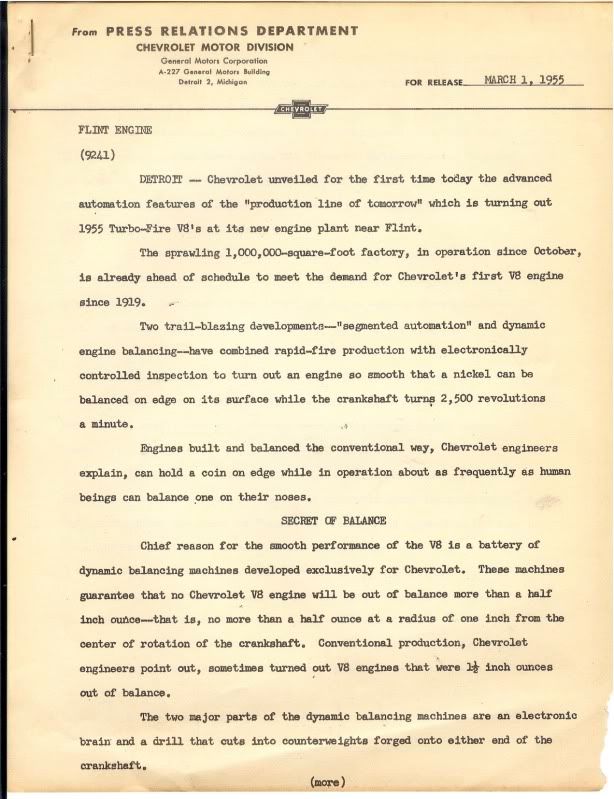
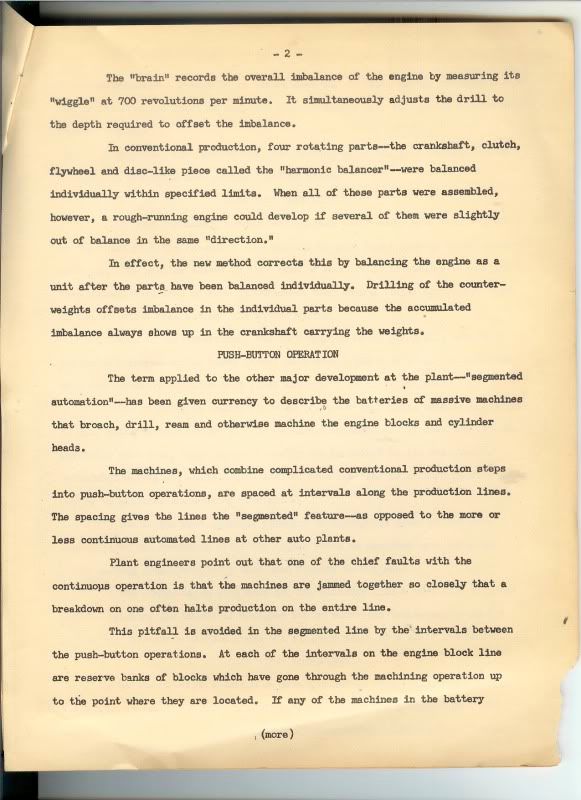
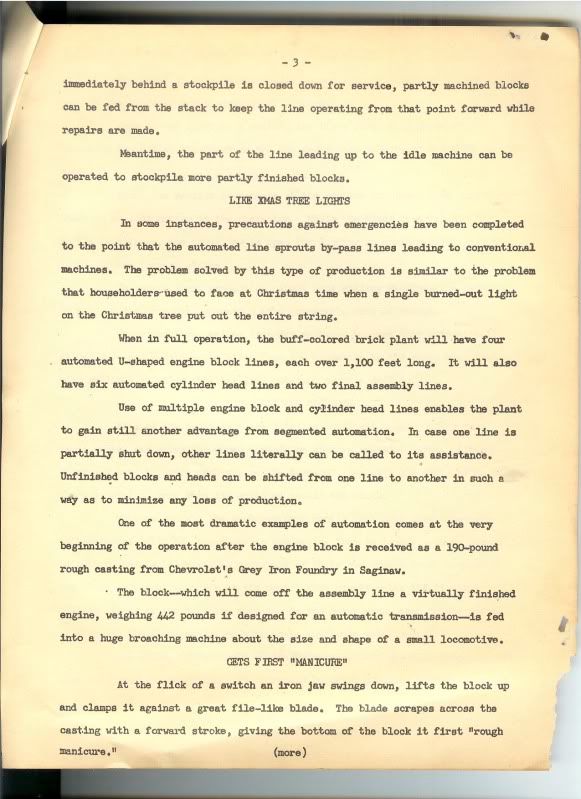
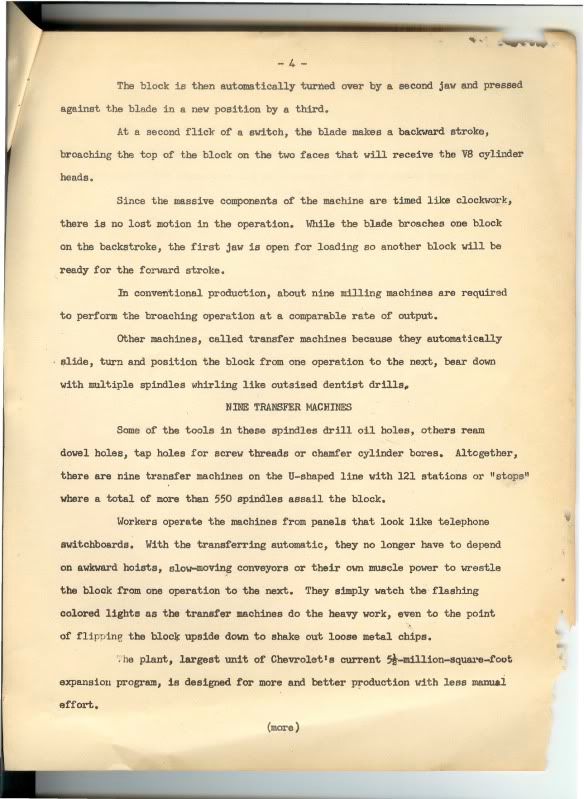
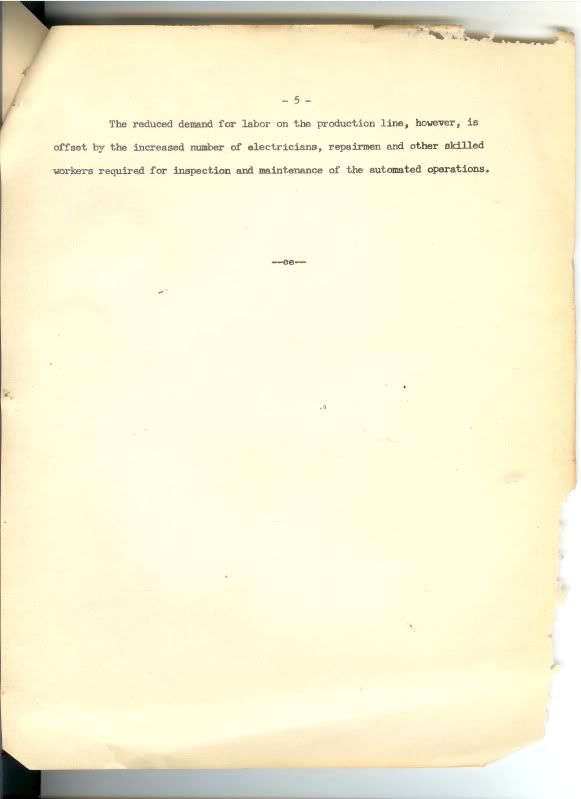
 . .
. .
Comment